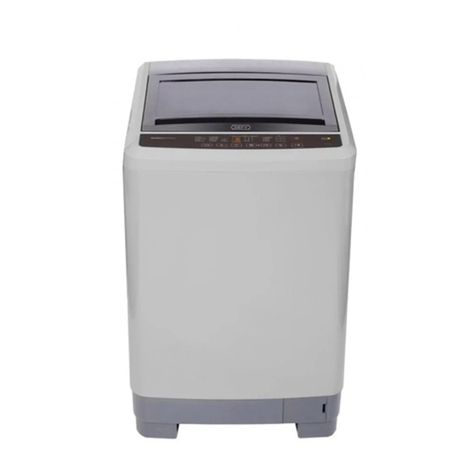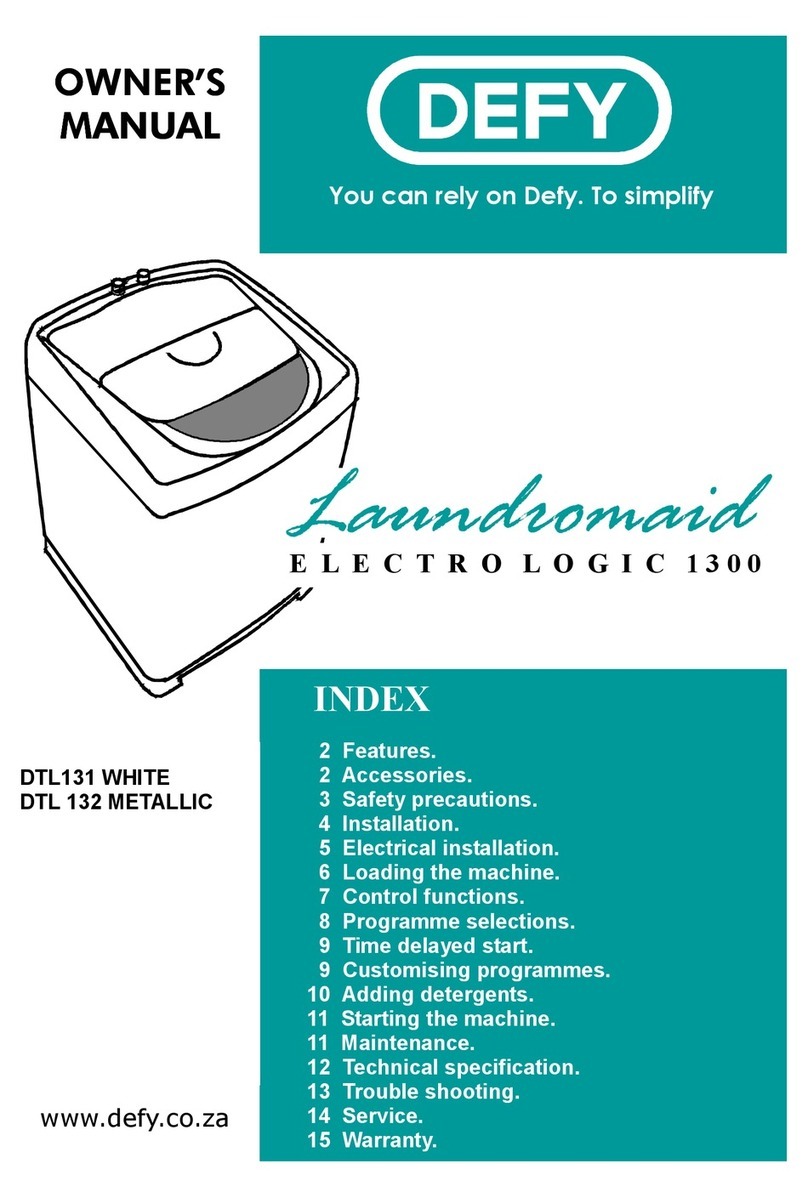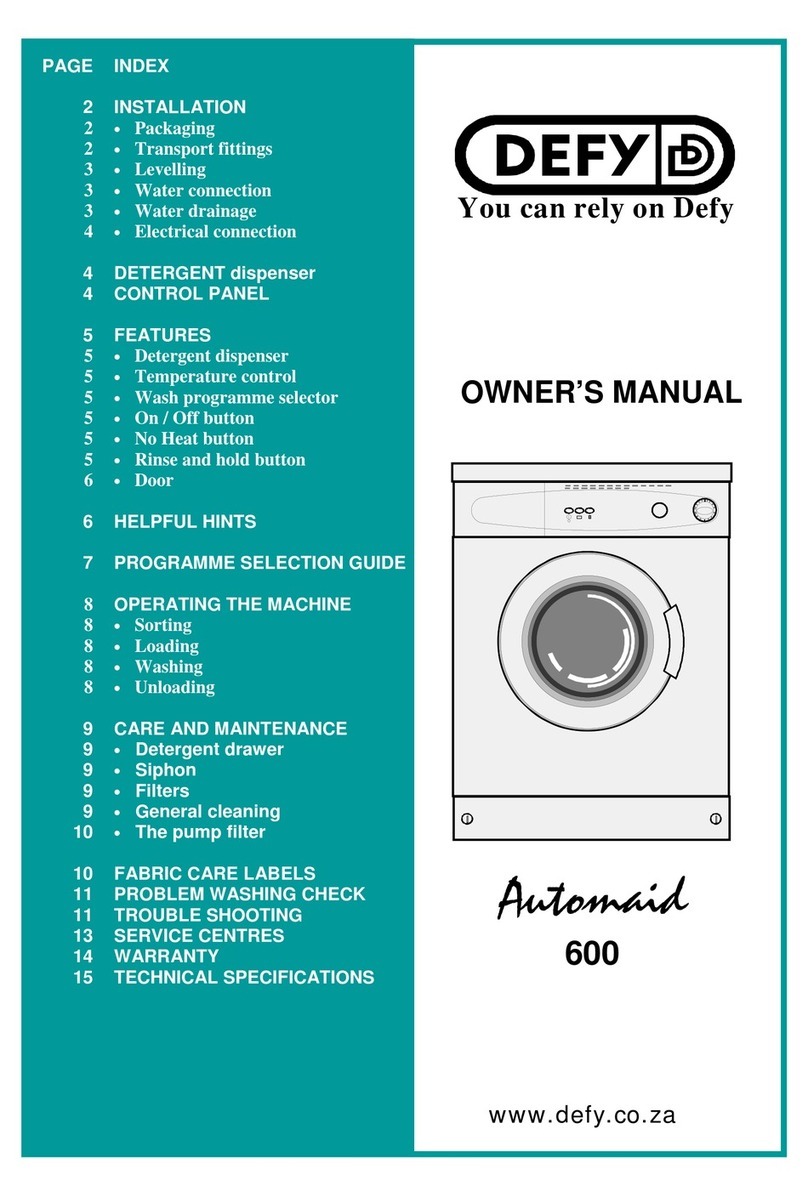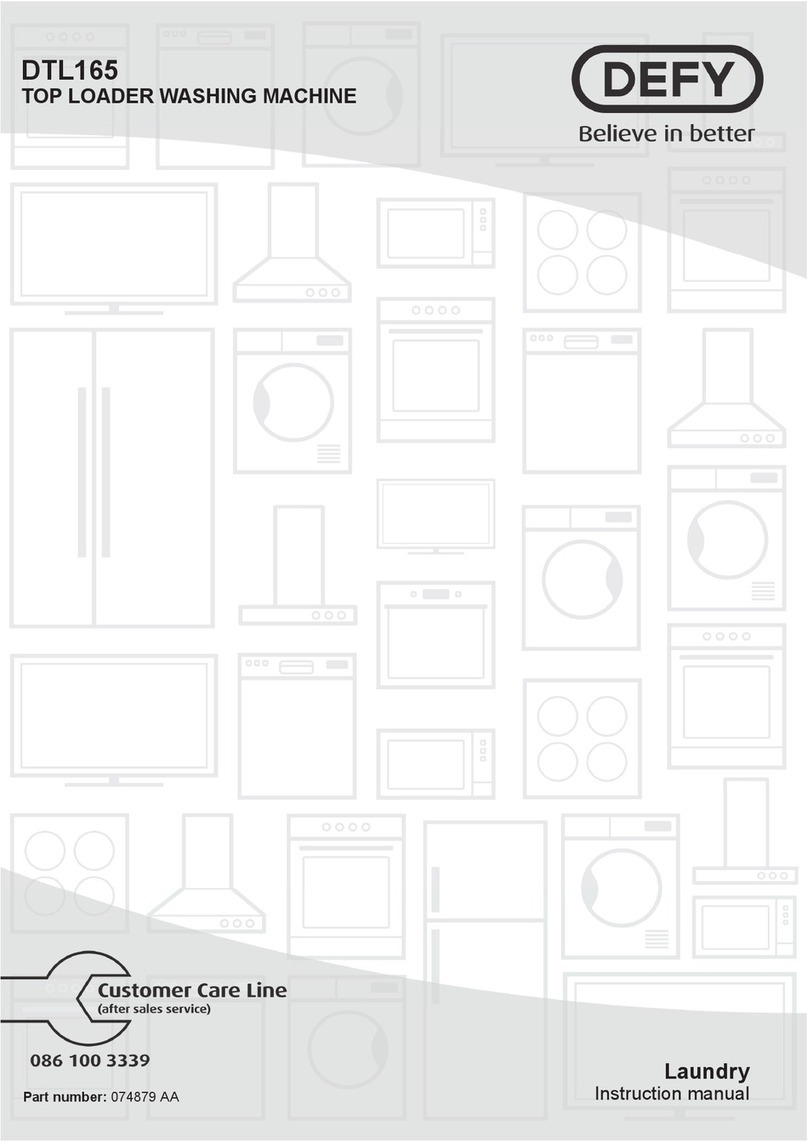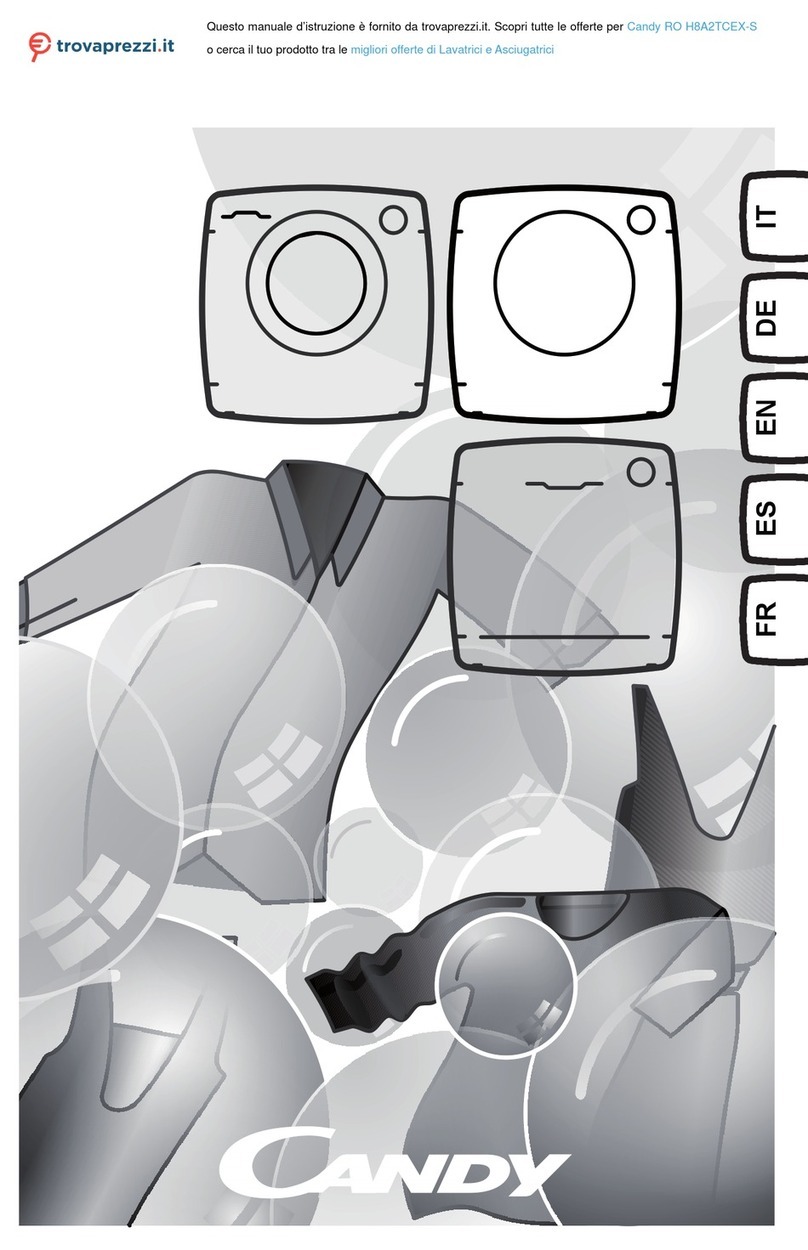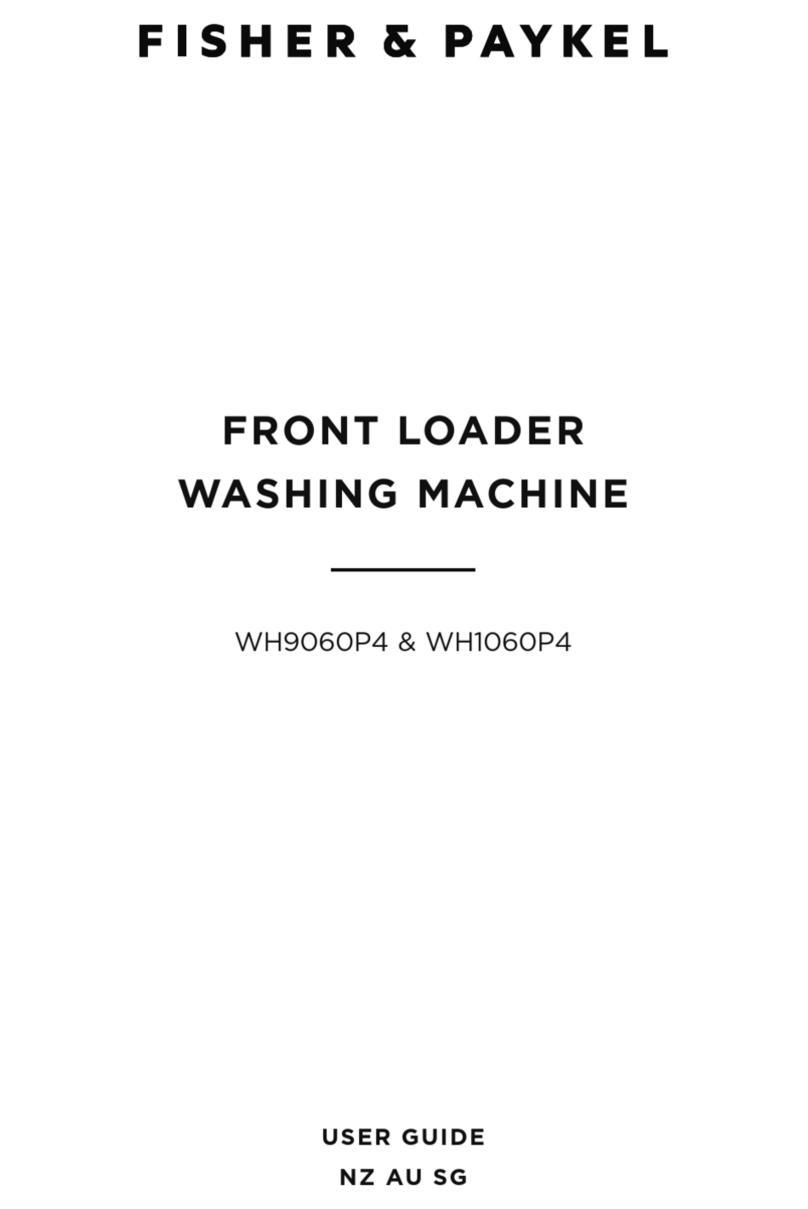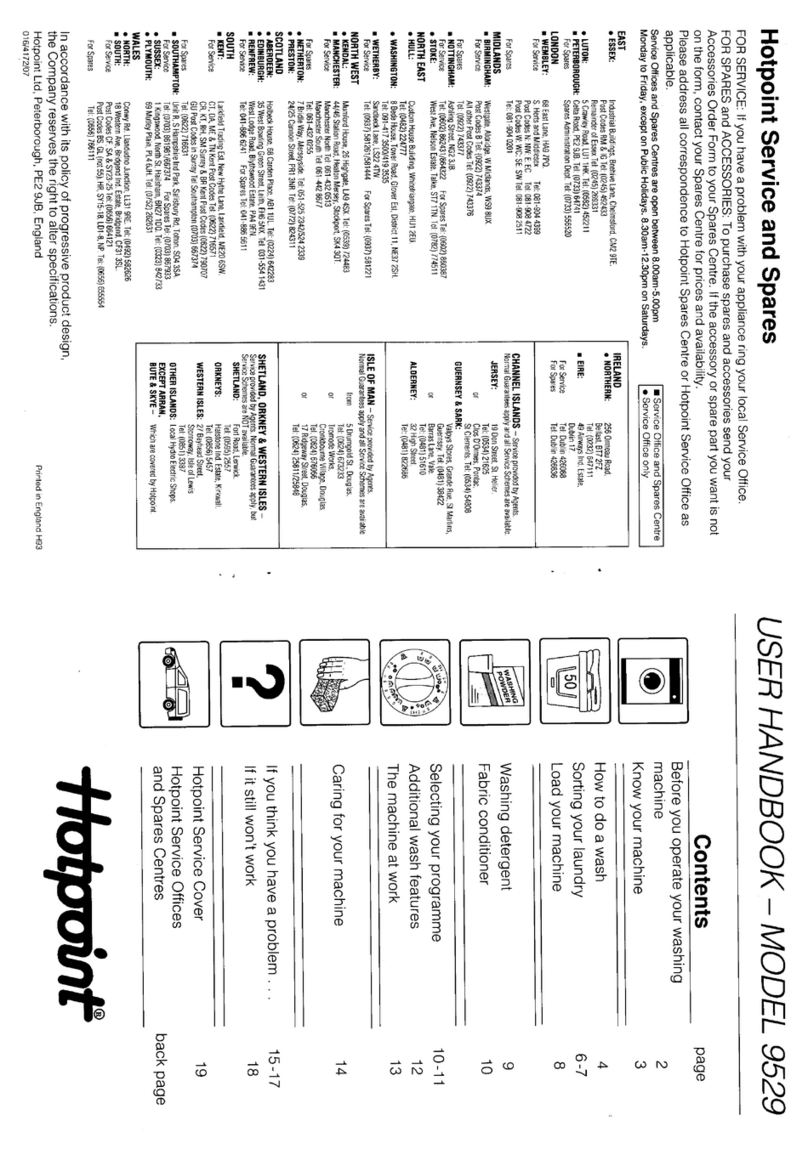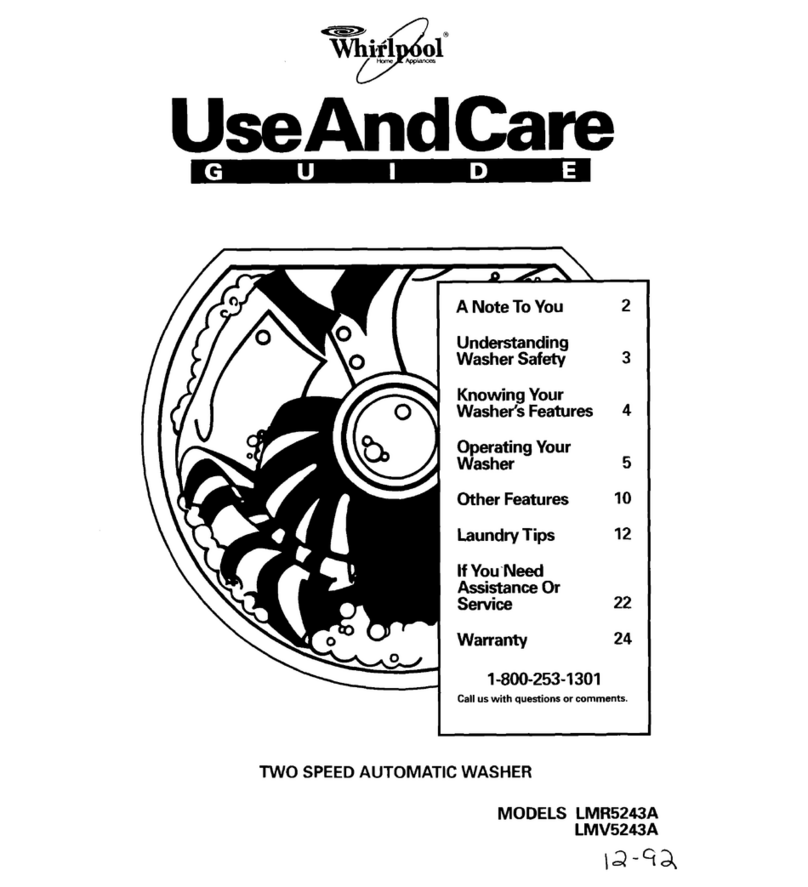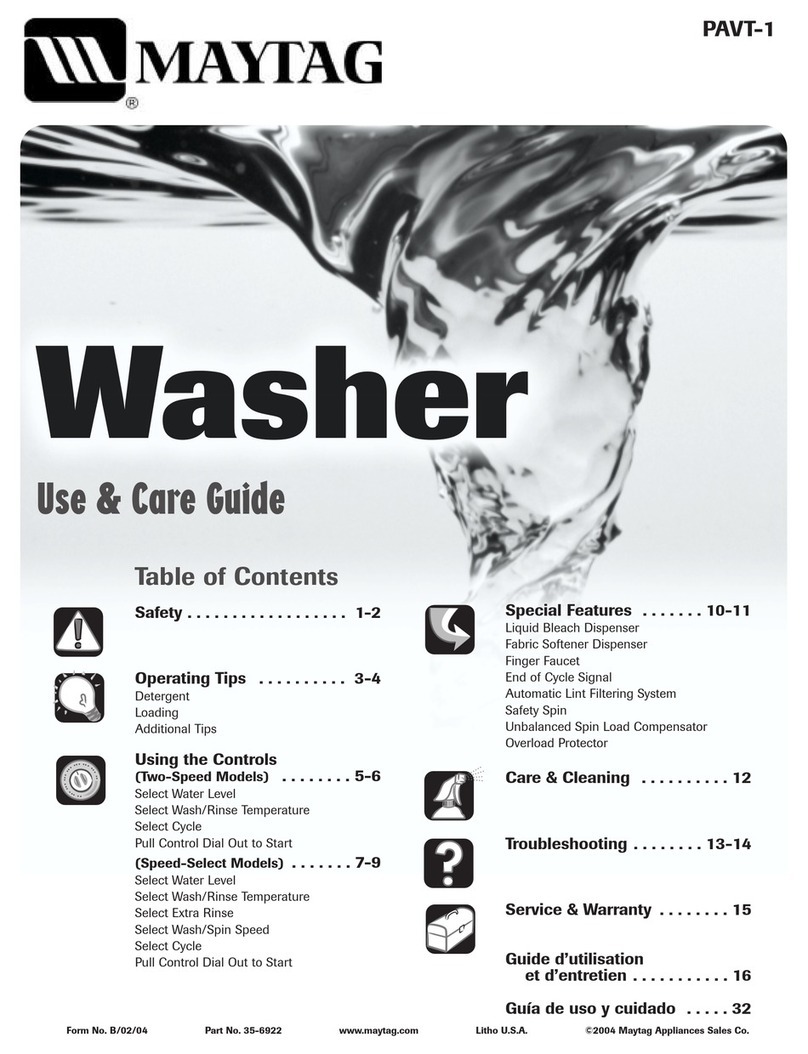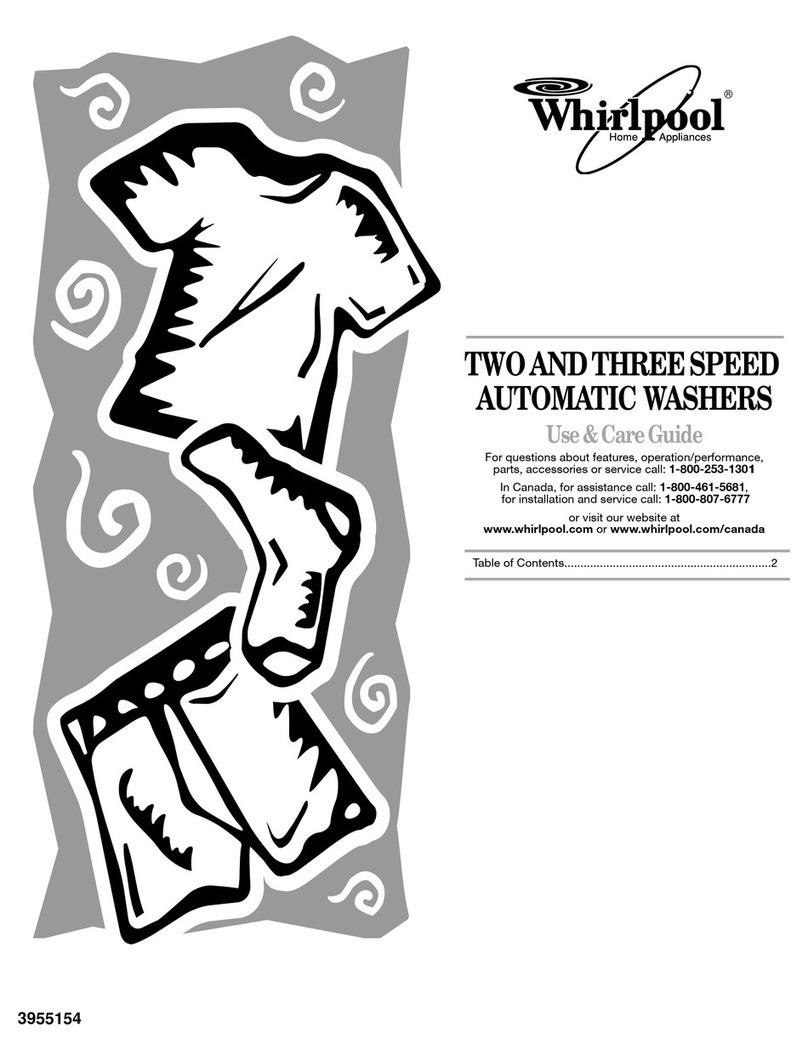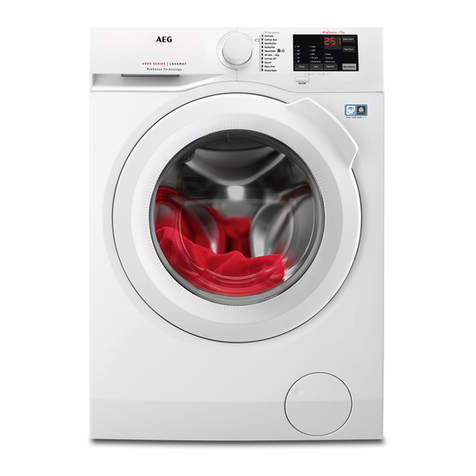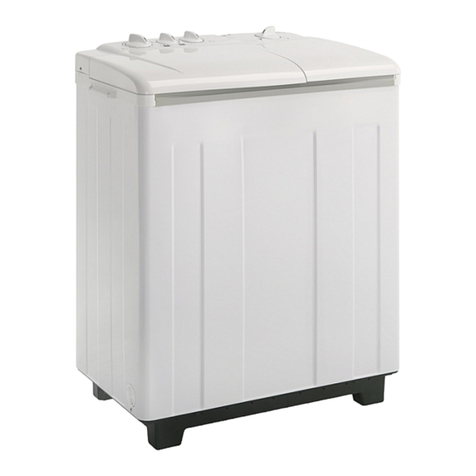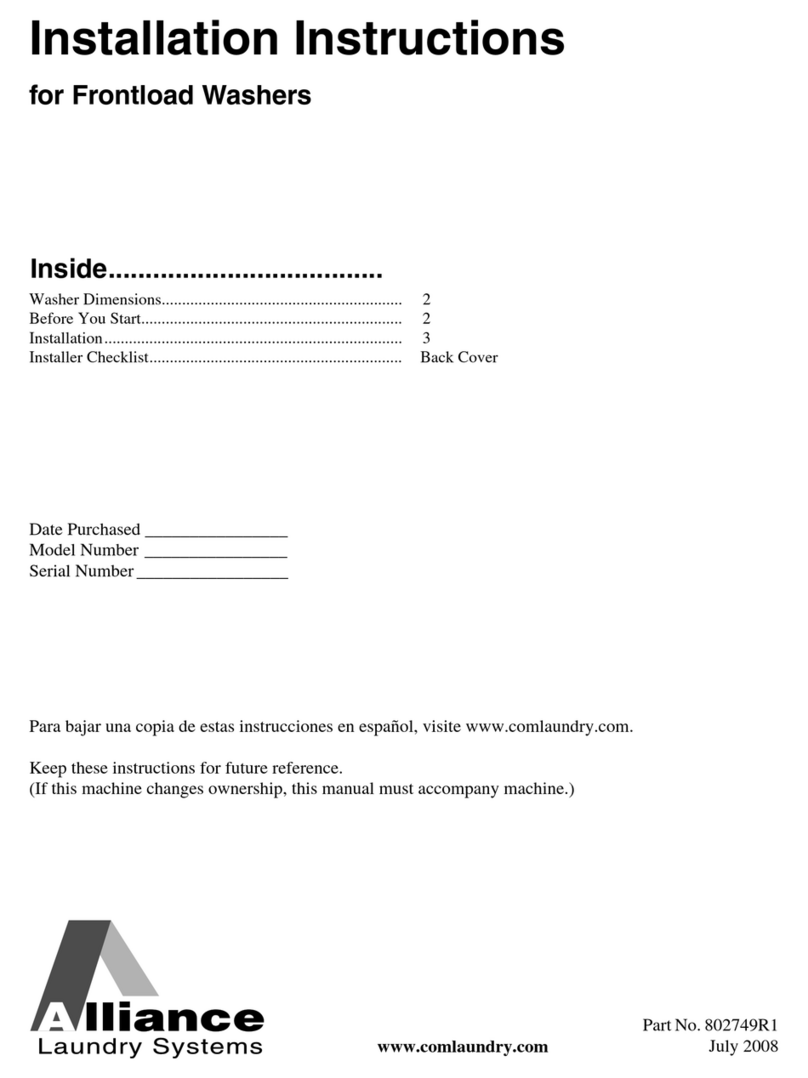Defy DTL160 User manual

Page 1
DTL160 - DTL164
TOP LOADER WASHING MACHINE
Laundry
Instruction manual
Part number: 073736 AF

Page 2
Introduction
Dear Customer,
Your new Defy top loader washing machine was manufactured in a state of the art facility and
has passed the strictest quality control procedures.
Please read this manual carefully before using your washing machine for the first time and
then store it within easy reach for future reference.
This manual will provide you with information on how to operate and care for your washing
machine to gain the maximum benefit from it.
We trust you will enjoy years of trouble free use.
EXPLANATION OF SYMBOLS
Important information
Warning—Hazardous situations
Warning—Electric shock
PLEASE REGISTER YOUR PRODUCT AT
www.defy.co.za
DEFY APPLIANCES (PTY) LTD
P.O.BOX 12004
JACOBS
DURBAN
4026
SOUTH AFRICA
Contents
Introduction 2
Important safety instructions 3
Preparation 6
Know your washing machine 7
Installation 8
Sorting the laundry 10
Operating the washing machine 12
Main programmes 14
Programme and consumption table 15
Maintenance and cleaning 16
Troubleshooting 18
Error codes 19
Technical specifications 19
Disposing of the old washing machine 19
Customer care 20
Warranty 21
Figures in this manual are
schematic and may not match your
machine exactly.

Page 3
General safety
• This washing machine is not
intended for use by persons
(including children) with
reduced physical, sensory or
mental capabilities or lack of
experience and knowledge
unless they have been given
supervision or instruction
concerning the use of the
washing machine by a person
responsible for their safety.
• Children should be supervised
to ensure that they do not play
with the washing machine.
• Never place the washing
machine on a carpeted floor.
Lack of airflow beneath the
machine could cause
overheating.
• In case of a malfunction or
maintenance work, disconnect
the washing machine from the
electrical mains immediately.
Repairs must only be made by
a qualified technician.
• Before washing, check all
clothes for loose buttons and
tears. Check pockets for coins ,
pins or other small articles.
Close zips and fasteners. Wash
small articles inside a pillow
case.
• Do not connect the valve to the
hot water supply if the product
is intended to be connected to
the cold water supply only.
• Do not connect the cold water
valve to the hot water supply if
the product incorporates two
valves. The red is for hot water
and the blue is for cold water.
Important safety instructions
• Do not wash clothes stained
with or soaked in petrol,
thinners, kerosene, vegetable
oil or any other flammable
liquids. Nor should any of these
liquids be added to the wash
water as they constitute a fire
hazard or there may be a risk
of an explosion.
• Only use the machine for
washing fabrics. Do not attempt
to wash plastic leather or
fibreglass. Sort and separate
clothes by fabric, colour and
degree of dirt.
• Use detergents, softeners and
supplements suitable for top
loading automatic washing
machines only.
• Always unplug the machine
from the wall socket when it
requires cleaning or service.
Only permit qualified persons to
repair or install parts in the
washer.
• Do not use water which is
hotter than 50 degrees Celsius
as this may deform plastic parts
of the machine. which could
result in injury, electric shock or
water leakage.
• The water supply and draining
hoses must be securely
fastened and remain
undamaged to prevent water
leakage.
• Check the water supply hose
connection by turning on the
water before washing and
ensure there is no water
leakage.
• Follow the instructions on the
textile tags and on the
detergent package.

Page 4
• Repair procedures must be
carried out by an Authorized
Service Agent. Repairs carried
out by incompetent persons
create a user risk: There may
be a risk of accidental fire. If
the washer operates
abnormally, it may cause an
injury. Defy shall not be held
liable for damages that may
arise from procedures carried
out by unauthorized persons.
• Do not expose the machine to
any type of flame or put
cigarettes or any volatile
substances on the machine
top. The machine may catch
fire or the machine may be
deformed due to its large
number of plastic components.
• Do not install the machine in a
bathroom or very humid place.
Doing so may cause a
malfunction or result in a short
circuit and there is a risk of an
electric shock.
• Never wash the machine by
spreading or pouring water
onto it! Do not spray water on
to the control panel and back of
the machine. There is a risk of
an electric shock, and the
machine may malfunction.
• Do not wash, rinse or spin
water proof fabrics such as
sleeping bags, raincoats, car
covers etc. Washing these
types of materials may lead to
injury through abnormal
vibration during spinning or
damage may result to the
washing machine, wall, floor
and clothes.
Warning! Never reach
into or put your hands
into the wash/spin tub
whilst the machine is
operating. If you reach
into the wash/spin tub
serious injury could
result. Wait until all
motion stops.
Warning! If the wash/spin
tub does not stop within
15 seconds after the
washer lid is opened,
switch the washer off
immediately and call the
customer care line on 086
100 3339.
Warning! The machine
must be unplugged
during installation,
maintenance, cleaning
and repairing procedures
to avoid the risk of an
electric shock.
• Keep hands and feet away
from the bottom of the washing
machine when it is in use to
avoid the risk of injury.
• Do not stand on the washing
machine or place weight on the
washing machine. Damage to
the washing machine may
result and there is a risk of
personal injury.

Page 5
• Turn off the water supply at the
tap when the washing machine
is not in use to minimise the
risk of damage that could arise
from water leakage. Unplug the
washing machine if it is not
going to be used for a long
period of time.
• Ensure that the water inlet pipe
is connected and the tap
opened before washing
clothes.
Intended use
• The washing machine is only
domestic use and for the
purposes for which it was
designed.
Transportation of the machine
1. Unplug the machine before
transporting it.
2. Remove water drain hose and
water supply hose connections.
3. Drain all remaining water from
the machine.
Ensure that the power plug and
power cord are properly
connected.
• Never touch the plug with wet
hands!
• Never unplug by pulling on the
cable, always pull out by
grabbing the plug.
• Do not operate a damaged
washing machine.
• If the power cable is damaged,
it must be replaced by the
manufacturer, after sales
service or a similarly qualified
person.
• Never plug the washing
machine into the wall socket
during installation. Death or
serious injury may result.
• For safety reasons, the wall
socket and the plug should be
accessible after installation.
• Do not make connections via
extension cables or multi-plugs.
• Pull out the plug from the wall
socket if the machine is not
going to be used.
Children's safety
• Electrical products are
dangerous for children. Keep
children away from the washing
machine when it is in use. Use
child lock to prevent children
from tampering with the
washing machine controls.
• Do not allow children to play on
or in the machine. If a child
accidentally falls into the wash/
spin tub, serious injury could
occur. Close the lid when
leaving the room where the
machine is located.
Keep children away from the
washing machine and keep
boxes or steps well away from
the washing machine to
prevent children from stepping
up and accessing the controls,
lid and wash tub of the washing
machine.
• Do not allow children to sit on
the washer.
Electrical connection
• The washing machine must be
earthed and the manufacturer
and seller do not accept
responsibility for any damage
due to incorrect electrical
connection.
• Connection must comply with
national regulations.

Page 6
Preparation
Preparation of location, electrical,
tap water and waste water
installations of the machine are the
customer's responsibility.
Ensure that the water inlet,
discharge hoses and power cable
are not folded, pinched or crushed,
during or after installation or
cleaning procedures.
Warning: Prior to installation,
visually check if the machine has
any defects on it. If so, do not
install it. A damaged machine is a
safety risk.
Things to be done for energy saving
• Always follow the instructions on the
detergent packaging.
• Wash slightly soiled laundry at low
temperatures.
• Use faster programmes for small
quantities of lightly soiled laundry. Before moving the machine, take note of
figure A on how to carry the machine.
Figure A
Remove package
• Remove package and take out the bottom
board of the cabinet on the foam cover.
• Open the washer door lid and take out the
accessories.
• Never perform a trial operation or run the
washing machine on the foamed cushion
as this is extremely dangerous.
Warning: Packaging materials
are Dangerous to children. Keep
packaging materials in a safe place
away from the reach of children.

Page 7
The manufacturer strives for continuous improvement. For this reason, technical
specifications, text and illustrations in this manual are subject to change without
notice.
Figures in this manual are schematic and may not match your machine exactly.
Values stated on the machine labels or in the documentation accompanying it are
obtained in laboratory conditions in accordance with the relevant standards.
Depending on operational and environmental conditions of the machine, these
values may vary.
Know your washing machine
1- Loading door
2- Detergent drawer
3- Control panel
4- Carry handle
5- Filter cap
6- Adjustable feet

Page 8
Review information in the user manual and
ensure that the electricity, water supply and
water drainage systems are appropriate. If
they are not, call a qualified technician and
plumber to have any necessary
arrangements carried out.
Appropriate installation location
• Place the machine on a rigid floor that has
sufficient load carrying capacity.
• The machine height is only adjustable at
the front. The machine needs to be
orientated on a floor that is level on either
side and the back is either level or higher
than the front.
• Choose a well ventilated dry location out
of direct sunlight.
• Do not place the machine on the power
cable.
• Do not install the machine at places where
the temperature may fall below 0ºC.
• Place the machine at least 10 mm away
from the edges of other furniture.
• Hot and cold water taps should be located
within 1 metre of the inlet valves.
Connecting the water supply
The water supply pressure required
to run the machine is between 1 to
10 bars (0 1 - 1 MPa).
It is necessary to have 10 - 80 litres
of water flowing from the fully open
tap per minute in order to have
your machine run smoothly. Attach
a pressure reducing valve if the
water pressure is higher.
If you are going to use the double
water inlet machine as a single
(cold) water-inlet unit, install the
supplied stopper to the hot water
valve before operating the machine
(Only applies to machines supplied
with a blind stopper for closing off
the hot water valve)
Installation
1. Connect the special hoses supplied with
the machine to the water inlets on the
machine. Red hose (left) (max hot water
temperature for the machine is 60 °C) is
for hot water inlet, blue hose (right) (max
25 °C) is for cold water inlet.
Warning: Ensure that the cold
and hot water connections are
made correctly when installing the
machine to prevent your laundry
coming out hot at the end of the
washing process and wearing out.
2. Tighten all hose nuts by hand. Never use
a tool when tightening the nuts.
3. Open the taps completely after completing
the hose connection to check for water
leaks at the connection points. If any
leaks occur, turn off the tap and remove
the nut. Retighten the nut carefully after
checking the seal. To prevent water
leakages and damages caused by them,
keep the taps closed when the machine is
not in use.
Connecting to the drain
• The end of the drain hose must be directly
connected to the wastewater drain or to
the washbasin.
Warning: Flooding will occur if
the hose comes out of its housing
during water discharge. There is
risk of scalding due to high
washing temperatures! To prevent
this and to ensure smooth water
intake and discharge of the
machine, secure the end of the
discharge hose tightly so that it
cannot dislodge easily.

Page 9
• To prevent flow of dirty water back into
the machine and to allow for easy
discharge, do not immerse the hose end
into the dirty water or do not push it in the
drain by more than 15 cm. If it is too long,
cut it shorter.
• The end of the hose should not be bent, it
should not be stepped on and the hose
must not be pinched between the drain
and the machine.
• If the length of the hose is too short, use it
by adding an original extension hose.
Length of the hose may not be longer
than 3.2 m. To avoid water leakage, the
connection between the extension hose
and the drain hose of the machine must
be properly fitted with an appropriate
clamp so as not to come off and leak.
• The hose should be attached to a height
of at least 65 cm, and 100 cm at most.
• In case the hose is elevated after laying it
on the floor level or close to the ground
(less than 65 cm above the ground), water
discharge becomes more difficult and the
laundry may come out excessively wet.
Therefore follow the heights as per the
following figure.
1. Unplug the machine before transporting it.
2. Remove the water drain and water supply
connections.
3. Drain all the water that has remained in
the machine.
4. Fit the polystyrene and then package the
machine.
Transportation of the machine
Using detergent /softener and bleach
When using detergent, softener,
starch, fabric dye, bleach or
limescale remover please ensure
you read the detergent
manufacturer's instructions on the
package carefully and follow the
suggested dosage values. Use
measuring cup if available.
Placing the rodent guard on the machine:
To place the rodent guard on the machine,
remove the screw as per the diagram below.
Place the rodent guard in position then
fasten the screw to secure the rodent guard
in place.
Adjusting the feet
Adjust the feet so that the machine is level
and balanced. A machine that is unlevelled
will vibrate, generate excessive noise,
damage the safety switch and may not
complete the spin function.
Adjust the 2 adjustable legs of the machine
by turning them either in a clockwise or anti
clockwise direction.
Rodent guard (Depends on model)
A rodent guard is not supplied with the
machine. If required, a rodent guard may be
purchased from Defy spares.

Page 10
Sorting the laundry
• Sort laundry according to type of fabric,
colour and degree of soiling and allowable
water temperature
• Treat spots and stains before washing.
• Tough stains must be treated properly
before washing. If unsure, check with a
dry cleaner.
• Use only dyes/colour changers and
limescale removers suitable for machine
wash. Always follow package instructions.
• Wash trousers and delicate laundry
turned inside out.
• Keep laundry items made of Angora wool
in the freezer for a few hours before
washing. This will reduce pilling.
• Laundry that has been soiled with flour,
lime dust, milk powder, etc. must be
shaken off before placing into the
machine. Dusts and powders on the
laundry may build up on the inner parts of
the machine in time and can cause
damage.
Sorting
Mix large and small items in each load.
Separate heavily soiled items from lightly
soiled ones.
Separate dark colours from light colours.
Separate colourfast items from non
colourfast ones.
Separate robust fabrics from delicate.
Separate whites from coloured fabrics.
Before first use of the machine, ensure that
all preparations are made in accordance with
the instructions in sections “Important safety
instructions” and “Installation”.
To prepare the machine for washing laundry
for the first time, perform a tub cleaning
(maintenance wash) procedure as outlined in
the main programme guide of this manual.
Preparation
• Close all zippers, snaps and hooks to
prevent them from snagging other articles.
• Remove pins and hard items to prevent
them from scratching the machine.
• Empty all pockets, remove all items in
pockets such as coins, pens and paper
clips, and turn pockets inside out and
brush pockets. Such objects may damage
the machine and cause noise.
• Put small size clothes in a laundry bag or
pillow case.
• Place curtains in the wash tub without
compressing them. Remove curtain
attachment items.
• Turn down cuffs and turn synthetic knits
inside out.
• Tie strings and sashes so they will not
tangle.
Preparation before initial use
• Always follow the instructions given on the
garment tags

Page 11
During the spin process, if washing is piled to one side of the spin tub it will cause
unbalance of the spin tub. The sensor will pick up the unbalance and will
automatically correct it. If after 3 corrections the unbalance remains the auto
correction cannot resolve the problem then the user must manually place the
clothing evenly inside the tub to resolve the problem.
WARNING: Follow the
information in the “Programme and
consumption table”. When
overloaded, there will be increased
creasing and lint. The machine's
washing performance will drop.
Moreover, noise and vibration
problems may occur.
Load capacity
The load capacity depends on the type of
laundry, the degree of soiling and the
washing program. The machine
automatically adjusts the amount of water
according to the weight of the loaded
laundry.
Laundry type Weight (g)
Bathrobe 1200
Napkin 100
Duvet cover 700
Bed Sheet 500
Pillowcase 200
Tablecloth 250
Towel 200
Hand towel 100
Evening gown 200
Underclothing 100
Men’s overalls 600
Men’s shirt 200
Men’s pajamas 500
Blouses 100
Loading
1.Lift the washer lid.
2.Arrange the articles to be washed loosely
round the perimeter of the tub.
3.Load evenly as an off balance load may
cause unnecessary vibrations.
4.Close the lid and; Ensure that no items are
caught in the lid.
5.Use a large load programme when
washing permanent press garments.
These items need more space to move.
1 - On / Off button
2 - Start / Pause button
3 - Air Turbo button
4 - Auxiliary Function button
5 - Water Level button
6 - Delayed Start Time button
7 - Water Supply button
8 - Function button / Programme select
9 - Display

Page 12
Operating the washing machine
How to start the Child-Lock function:
Press the “Water level” button and ‘’Function’’
button at the same time for 3 seconds. Should
the child lock function be activated, ‘’CL” will
appear in the display for 3 seconds.
To deactivate the Child-Lock:
Press both the “Water level” and “Function”
buttons at the same time to deactivate.
Power Button
Press this button once
to operate. Press again
to switch the power off.
Start/Pause Button
Use to pause and
restart the operation.
To change the washing
procedure during an
operation, press this
button to stop and
again to restart after
changing the
procedure.
Programme Select Button
Each time the program
select button is
pressed, the washing
programme changes.
Water Supply Button (Depends on model)
Each time this button is
pressed, the water
temperature is selected
as follows:
Cold/Hot/ Warm
Cold: No light
Warm: Red light
Hot: Flashing red
light.
Auxiliary Function Button
Each time the Function
button is pressed, the
function changes.
Remaining Time, Delay Start Time, Error
Display
Displays remaining
wash time, the
reserved delay start
time and the error code
if a problem occurs in
the washing machine.
(See error codes).
Delay Start Time Button
Adjusts delay start time
up to a maximum of 18
hours.
Water Level Button
The water level is
automatically adjusted.
The water level can still
be selected manually
by pressing this button.
Displays selected
programmes default
water level: Eco / Low /
Medium / High.
Air Turbo Button
Press to speed dry
laundry. Can only be
selected if a spin cycle
is set. Press start/
pause button and
change the time whilst
machine is running.
Press start /pause
again to continue.
Child Lock
The child lock helps to
protect children from
being accidentally hurt
should they be playing
with the washer.

Page 13
Main programmes
Depending on the type of fabric, use the
following main programmes.
Delicate
Use this programme for washing machine
washable delicate (cotton, blended and
wool) items such as sweaters, jumpers and
cardigans. Hot water and soaking options
cannot be selected in this programme. We
recommend using special purpose
detergents suitable for washing delicate
laundry. Light loads only. ((Max 1/3 of full
capacity).
Normal
This programme is suitable for washing a
full load of normally soiled durable cotton
and blended clothes.
Quick
This programme is suitable for washing a
light load of lightly/daily soiled cotton
clothes in a short time. (Refer to
programme guide)
Heavy
This programme is suitable for washing a
full load of heavily soiled durable cotton
and blended clothes. Soaking function is
set automatically in this wash programme.
Hot water inlet valve will be activated if
available with your model.
Add a special purpose detergent suitable
for cleaning machines. Soaking, high water
and 6 min air turbo options are set
automatically in this programme.
Tub clean (Continued)
Auto
This programme selects the best water
level and wash programme automatically
depending on the amount of laundry. Use
this programme for washing cotton and
blended items.
Blanket
This programme is suitable for washing
bulky laundry items such as blankets and
bed sheets. Fold bulky items in a suitable
manner before placing them in the washing
machine. Do not overload. (Max 1/2 of full
capacity).
Eco
This programme is suitable for washing a
lesser amount of lightly/daily soiled laundry
in a short time using minimum amount of
water. (Max 1/3 of full capacity).
Tub clean
Use this programme once a month to
sanitize and clean your machine and to
prevent unwanted odours. Do not place
any items or laundry in the machine when
you use this programme, it must be
operated when the washer is empty
otherwise laundry or washer might be
damaged.

Page 14
Auxiliary function selection
Wash
Soaking
Select this function to wash laundry by
soaking. Soaking is recommended for
heavily soiled laundry items. Add the
normal amount of detergent and start the
wash programme by selecting this
function. Soaking is not selectable in Eco
and Wool programmes.
The soak function is available in Heavy,
Normal and Blanket Modes.
Time taken before soak function begins
is 10 minutes.
Heavy Mode
Using cold water and water level at 8, the
total soak time is 27:35 minutes.
Normal Mode
Using cold water and water level at 8, the
total soak time is 27:13 minutes.
Blanket
Using cold water and water level at 8, the
total soak time is 27:27 minutes.
Auxiliary functions: So: Soaking W: Wash
R: Rinse Sp: Spin
Auxiliary functions in the table may vary according to the model of your machine.
Water and power consumption may vary subject to changes in water pressure,
water hardness and temperature, ambient temperature, type and amount of laundry,
selection of auxiliary functions and spin speed, and changes in electric voltage.
See the washing time of the programme selected on the display of the machine. It is
normal that small differences may occur between time shown on the display and
actual washing time.
• : Selectable
* : Automatically selected, no cancelling.
** : Energy Label programme (EN 60456 Ed.3)
Rinse
Use this programme when you want to
rinse or starch separately.
Spin
Use this programme to apply an additional
spin cycle for your laundry or to drain the
water in the machine.

Page 15
EN Functions Air turbo
Duration
(Mins)
Programme Max. Load
(Kg)
Water
Level S0/W/R/Sp W/R/Sp Sp R/Sp W/R W 15
Mins
30
Mins
Fuzzy - - • • • • • -
Tub clean - 8 • • • 76
Eco 3 4 • • • • • • • 37
Eco 2 3 • • • • • • • 34
Eco 1 2 • • • • • • • 30
Eco 0.5 1 • • • • • • • 27
Wool 4 8 • • • • • • • 50
Wool 7 • • • • • • • 46
Wool 3 6 • • • • • • • 42
Wool 5 • • • • • • • 38
Wool 2 4 • • • • • • • 35
Wool 3 • • • • • • • 32
Wool 1 2 • • • • • • • 28
Wool 0.5 1 • • • • • • • 25
Blanket 4 8 • • • • • • • • 70
Blanket 7 • • • • • • • • 66
Blanket 3 6 • • • • • • • • 62
Blanket 5 • • • • • • • • 58
Blanket 4 • • • • • • • • 55
Blanket 3 • • • • * • • 52
Blanket 1 2 • • • • • • • * 48
Blanket 0.5 1 • • • • • • • * 45
Normal Max 8 • • • • • • • * 65
Normal Max 7 • • • • • • • * 61
Normal Max 6 • • • • • • • * 57
Normal 4 5 • • • • • • • * 53
Normal 3 4 • • • • • • • * 50
Normal 2 3 • • • • • • • * 47
Normal 1 2 • • • • • • • * 43
Normal 0.5 1 • • • • • • • * 40
Heavy Max 8 • • • • • • • * 101
Heavy Max 7 • • • • • • • * 97
Heavy Max 6 • • • • • • • * 93
Heavy 4 5 • • • • • • • * 89
Heavy 3 4 • • • • • • • * 86
Heavy 2 3 • • • • • • • * 83
Heavy 1 2 • • • • • • • * 79
Heavy 0.5 1 • • • • • • • • 76
Quick 2 3 • 22
2
Programme and consumption table

Page 16
Since the following are not factory faults
they are the owners responsibility:
Damage to the exterior finish, breakage of
components, damage through improper use
or installation of the washing machine or
damage caused by moving the washing
machine.
Before calling a Service technician or
your dealer, please check the following:
• Is the machine plugged into the wall
socket? Is the house circuit breaker on?
• Is the machine switched on? Has the
washer lid been closed properly?
• Check if the machine is level.
Maintenance and cleaning
If cleaned at regular intervals, the service life
of the machine will be extended and
frequently faced problems will decrease.
Cleaning the detergent drawer
Cleaning the body and control panel
Wipe the body of the machine with soapy
water or non-corrosive mild gel detergents
as necessary, and dry with a soft cloth. Use
only a soft and damp cloth to clean the
control panel.
Cleaning the water intake filters
1. Close the taps.
2. Remove the nuts of the water intake
hoses to access the filters on the water
intake valves. Clean them with an
appropriate brush.
3. If the filters are very dirty, take them out
with the aid of pliers and clean the filters.
Draining remaining water and cleaning the
pump filter
The filter system in your machine prevents
solid items such as buttons, coins and fabric
fibres clogging the pump impeller during
discharge of washing water. This ensures
easy water discharge and the service life of
the pump will be extended.
If the machine fails to drain water, the pump
filter is clogged. The filter must be cleaned
whenever it is clogged or once every 3
months.
Water must be drained off first to clean the
pump filter. In addition, prior to transporting
the machine (e.g., when moving to another
house) and in case of freezing of the water,
water may have to be drained completely.
Pull detergent drawer towards yourself.
Turn detergent drawer upwards, and pull
drawer out. Clean detergent drawer with
water. Follow the instructions on cleaning
the detergent drawer.
There is a filter at the end of each water
intake valve at the rear of the machine.
These filters prevent foreign substances and
dirt in the water from entering the washing
machine. Filters should be cleaned as they
do get dirty.
Clean the detergent drawer every 4-5
washing cycles to prevent the accumulation
of powder detergent over time. Wash the
detergent drawer with plenty of lukewarm
water in a wash basin. Wear protective
gloves or use an appropriate brush to avoid
skin contact with the residues in the drawer
whilst cleaning. Insert the drawer back into
its place after cleaning and ensure that it is
properly seated.
• Is the detergent dose correct? Is the filter
clean? Is the tap open?
• Is there a water supply to the home? Have
any of the hoses been twisted or kinked?

Page 17
Warning: Foreign substances
left in the pump filter may damage
the machine or may cause a noise
problem.
In order to clean the dirty filter and
discharge the water:
1. Unplug the machine to cut off the power
supply.
Warning: Temperature of the
water inside the machine may rise
up to 90ºC. To avoid a scalding
risk, the filter must be cleaned
after the water in the machine
cools down.
2. Open the filter cap.
If the filter cap is composed of two pieces,
press the tab on the filter cap downwards
and pull the piece out towards yourself.
3. Only some models are fitted with an
emergency draining hose. Follow the steps
below to discharge the water if your machine
is not fitted with an emergency drain hose.
a. Place a large container in front of the
filter to catch water from the filter.
b. Loosen pump filter (anticlockwise)
until water starts to flow. Fill the flowing
water into the container you have placed in
front of the filter. Always keep a piece of
cloth handy to absorb any spilled water.
c. When the water inside the machine is
finished, take out the filter completely by
turning it.
4. Clean any residues inside the filter as well
as fibres, if any, around the pump impeller
region.
5. Install the filter.
6. If the filter cap is composed of two pieces,
close the filter cap by pressing on the tab. If
it is one piece, seat the tabs in the lower part
into their places first, and then press the
upper part to close.
Discharging the water when the machine
does not have an emergency draining
hose:
Cleaning the fuzz collector
1 Push to take filter out
2.Open the filter and clean. Keep the
filter rubber in the original position.
3. After cleaning assemble the filter on the
right position.

Page 18
Problem Where to Check
There is no
power.
Check whether there has been a power failure.
Check whether there is blown fuse or tripped circuit breaker.
Check that the power cord is securely plugged in.
The machine
does not work.
Is the washer lid open? Close the lid.
Is the Pause button on? Press the START/PAUSE button one more time and
check if the washer starts.
Has the water filled to the water level?
If the water pressure is low it may take a long time before washing starts.
Is the tap closed? Open the water supply tap.
The drain hose
and spin basket
have frozen up.
Add hot water to the frozen water tap and remove the drain hose. Soak in hot
water.
Pour hot water into the spin basket and leave in for approximately 10 minutes.
Place a hot water towel on the drain hose connector.
When the drain hose defrosts, connect again and check for proper water draining.
The water drains
out immediately.
The drain is clogged with coins or pins.
Check that the drain hose is not below 65 cm.
Half fill the spin basket with water and try spinning again.
The water leaks
at the water
supply hose
connector.
If the tap connecting part is loose, water may leak.
Repeat the assembly steps again. (Refer to “Connecting the water supply hose”).
Check if the rubber seal on the water supply hose is in the correct position. Screw
tightly again.
Is the water supply hose kinked? Straighten the hose.
If the water supply is too strong, water may leak. Close the tap a little.
Is water leaking from the tap itself? Fix the tap.
Water is not
supplied.
Was the Start/Pause button pressed after selecting the water supply? If the Start/
Pause button is not pressed, water is not supplied. Press the Start/Pause button.
Check whether the water supply tap is open.
Is the filter net at the water supply hose connector clogged? Clean the filter net by
brushing with a toothbrush.
Is the water supply cut off? If so, switch off the tap and power off the washer.
Check to see that the water pressure is not too low.
Spinning makes
loud noises and
vibrations.
Check if the laundry is spread evenly in the washer. Spread out the laundry evenly
and start again.
Is the washing machine level on a sturdy flat floor. Set the machine level.
Adjust the legs on the feet and ensure they are level.
Is the area around the washing machine cluttered with objects?
Remove unnecessary objects away from the wash machine.
Water does not
drain.
Check that the height of the drain hose is not over 100 cm.
Check that the drain hose is not kinked or obstructed.
Check to see if the water outlet is clogged.
The machine
does not spin.
Check to see that the laundry is evenly distributed and that it has not clumped on
one side of the wash/spin tub.
Check whether the washer is on a level surface. Close the washer lid. Ensure the
lid is not being obstructed from closing.
Other problems. Press the POWER ON/OFF button to switch off the power.
Call the customer care line on 086 100 3339.
Troubleshooting

Page 19
Disposing of the washing machine
• This washing machine has been
manufactured with high quality parts and
materials which can be reused and are
suitable for recycling.
Error code Error Where to Check
E2 Water pumping is very slow
Is the drain hose positioned correctly?
Is the drain hose bent or placed too high?
Is the internal part of the hose or drain pump (only pump
model) clogged with impurities?
Check whether there has been a power failure.
E3 Unbalance
Check to see that the laundry is evenly distributed and that it has
not clumped on one side of the wash/spin tub.
Check whether the washer is on a level surface.
E4 Over flow Call the customer care line on 086 100 3339
E5 Frequency out of range Call the customer care line on 086 100 3339
E6 Lid open Close the washer lid. Ensure the door is not being obstructed from
closing. Level the machine.
E1 Water intake is very slow
Is the water tap shut off?
Is the water supply cut off?
Is the tap or water supply hose frozen?
Is the water pressure low or is the filter of the inlet valve
clogged with impurities?
Is the hot hose connected to cold?
Is the cold hose connected to hot?
Error codes
Warning: If the problem cannot be eliminated, even after the instructions
have been followed, contact the customer care line on 086 100 3339. Never try to
repair a non functional machine yourself.
Technical specifications
Model No. DTL159 DTL160
Height (mm) 990 mm 990 mm
Width (mm) 600 mm 600 mm
Depth (mm) 615 mm 615 mm
Net weight (Kg) 43 43
Spin Speed (rpm) 750 750
Rated voltage (V/Hz) 220–240V~50Hz 220–240V~50Hz
Total current (A) 1.8 1.8
Total power (W) 350-390W 350-390W
Inner Tub Stainless Steel Stainless Steel
Display LED Display LED Display
Colour White Silver
DTL164
990 mm
600 mm
615 mm
43
750
220–240V~50Hz
1.8
350-390W
Stainless Steel
LED Display
Manhattan Grey
Maximum mass of dry cloth (Kg) 6 6 6
• Do not dispose of the machine with
normal domestic waste at the end of its
service life.
Please consult with your local authorities.
• Should you at any time in the future scrap
the washing machine, cut the power cord
and take measures to render the door
inoperative thereby preventing children,
when playing, getting trapped inside.

Page 20
Defy customer care call centre
If you have followed the instructions and still have a problem or have any service or spares
queries, please contact the customer care line by sending an email to service@defy.co.za
or by calling 0861 00 3339. They will be able to advise you on any aspect of the appliance.
ZAMBIA: SOUTHGATE INVESTMENTS LTD
Plot 1606, Sheki Sheki Road
P.O. Box 33681
Lusaka, 10101, Zambia
Tel: +260 0211 242332/3
Fax: +260 0211 242933
NAMIBIA: ATLANTIC DISTRIBUTORS (PTY)
LTD
10 Tienie Louw Street, Northern Industrial Area
P.O. Box 21158, Windhoek, Namibia
Tel: (061) 216162
Fax: (061) 216134
ZIMBABWE: TRADE COM AFRICA
Trade Com Africa, 183 Loreley Crescent
Msasa, Harare, Zimbabwe
Tel: +00263 773 438001
BOTSWANA: RAY MORGAN AGENCIES
RMA Service Centre, Plot 48, East Gate
Gaborone International Commerce Park
Kgale View, Gaborone
Botswana
Tel: +267 390 3996 / 390 3912
Fax: +267 318 7376
Cell: +267 7134 6539
SWAZILAND: LYNDS DISTRIBUTORS
P.O Box 716, Mbabane, Swaziland, H100
Tel: (00268) 2515 4310/8
Fax: (00268) 2518 4318
MOZAMBIQUE: COOL WORLD. LDA
Rua da Resistencia No. 97B R/C
Cell: +258 84 44 61 234
Nosso Show Room
Av: da Industrias, Parcela No.735 * 735A
Machava, Maputo
Defy Sub-Saharan Africa Branch contact
details
This manual suits for next models
1
Table of contents
Other Defy Washer manuals

Defy
Defy Laundromaid Electrologic 720 User manual

Defy
Defy DTT169 User manual
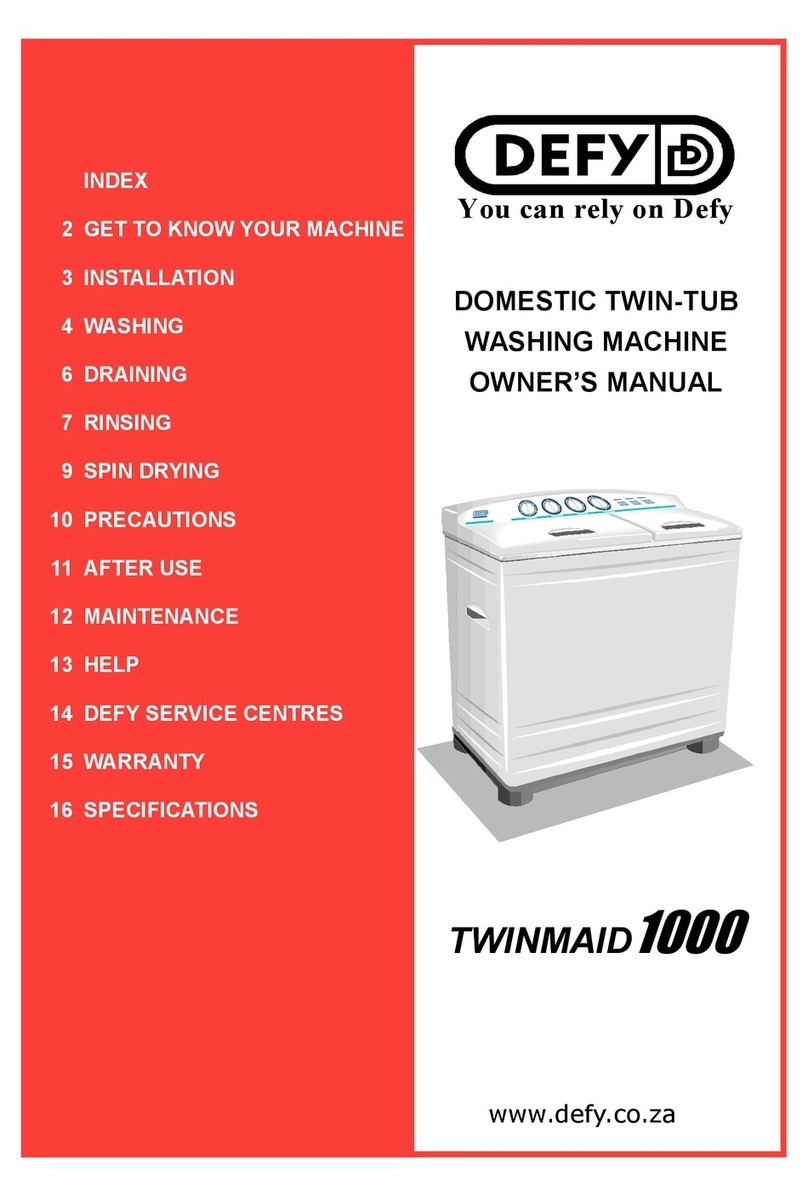
Defy
Defy TWINMAID 1000 User manual
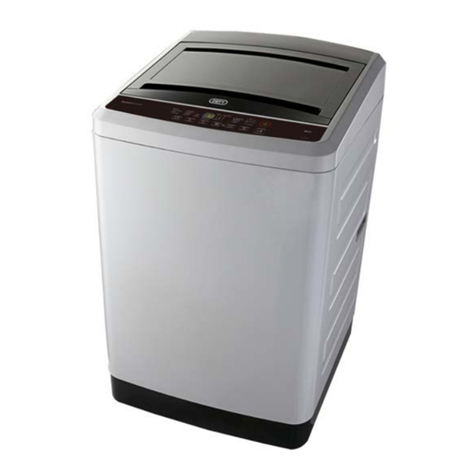
Defy
Defy DTL149 User manual

Defy
Defy DAW 389 User manual
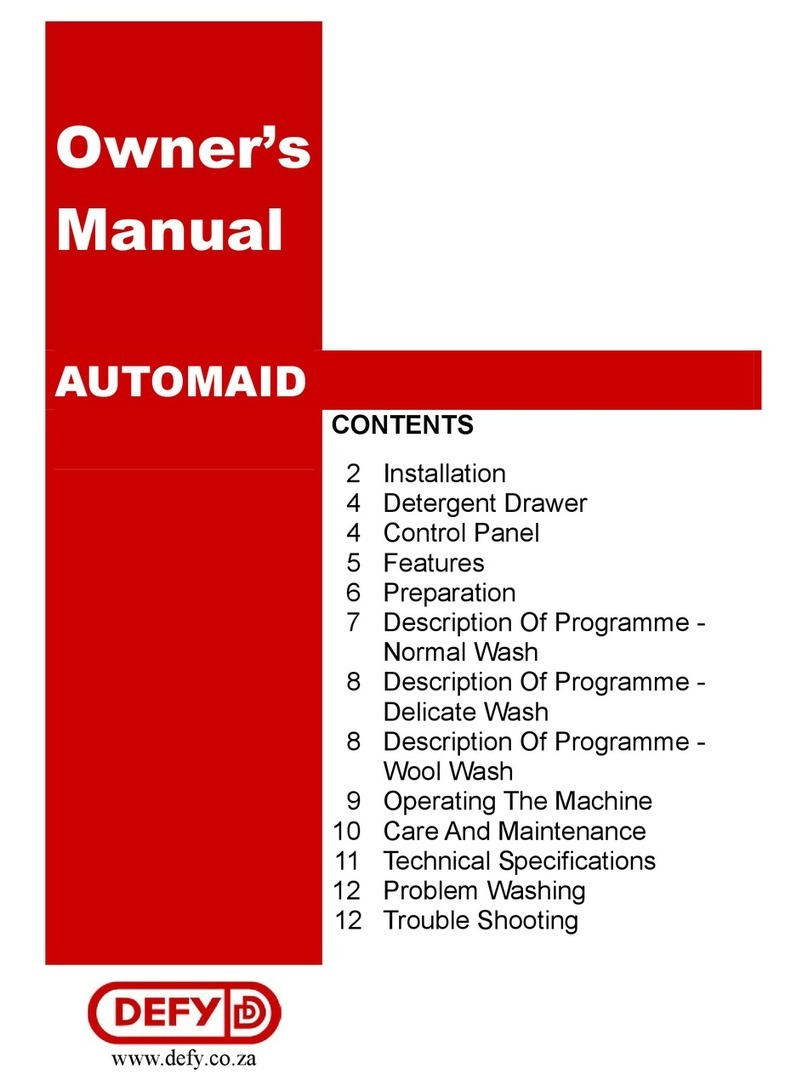
Defy
Defy AUTOMAID User manual
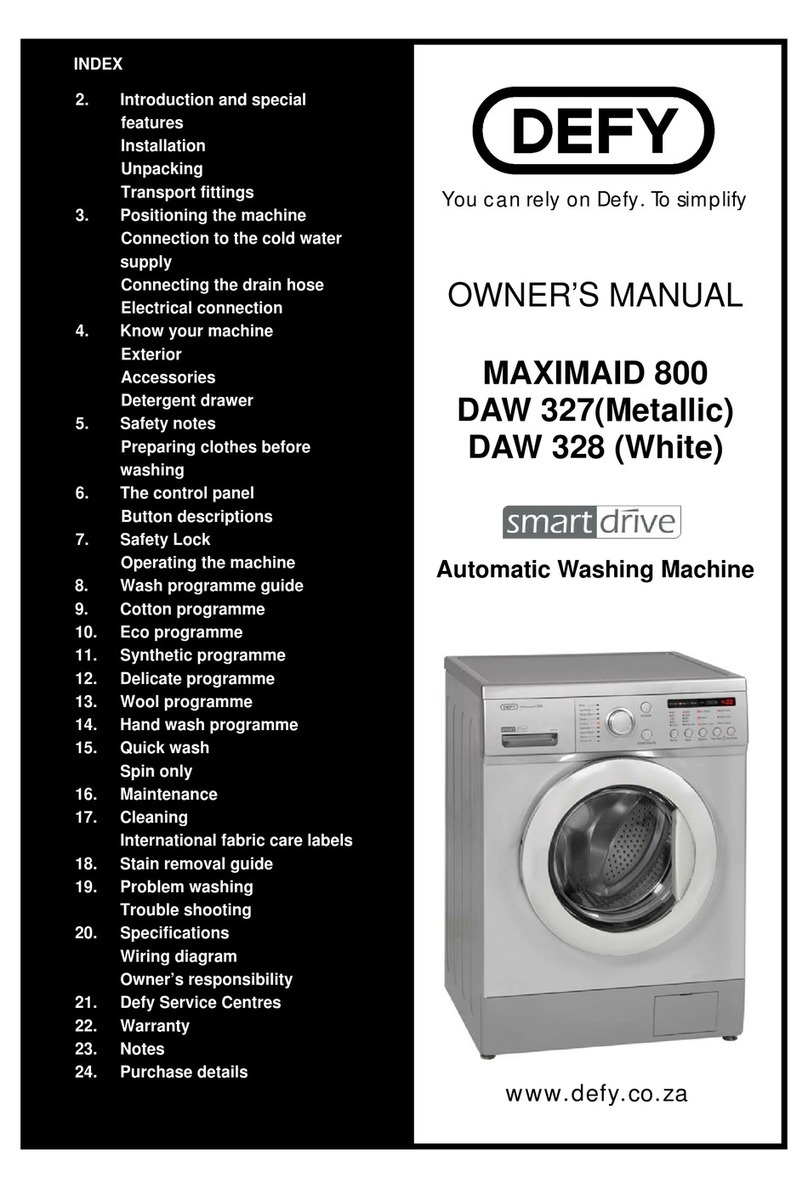
Defy
Defy MAXIMAID 800 DAW 327 User manual
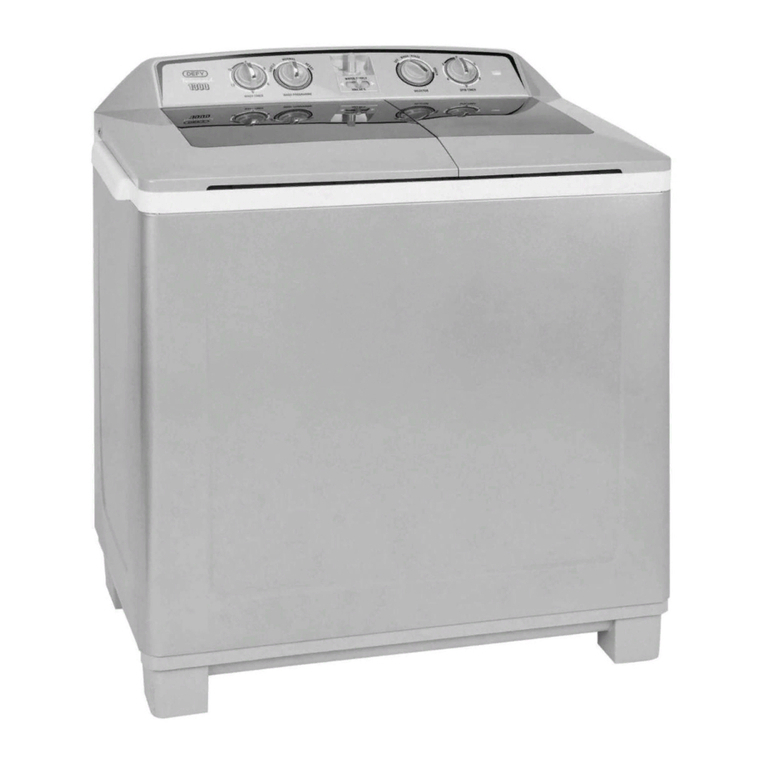
Defy
Defy TWINMAID 1300 User manual

Defy
Defy DAW386 User manual
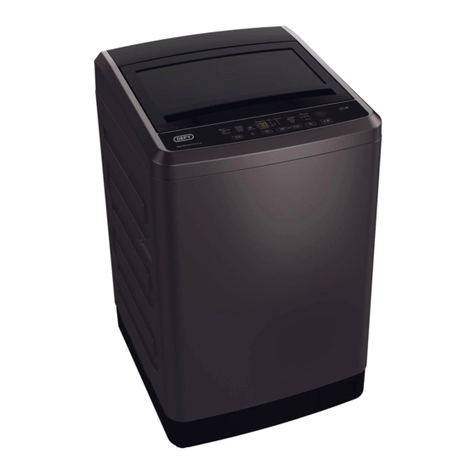
Defy
Defy DTL162 User manual
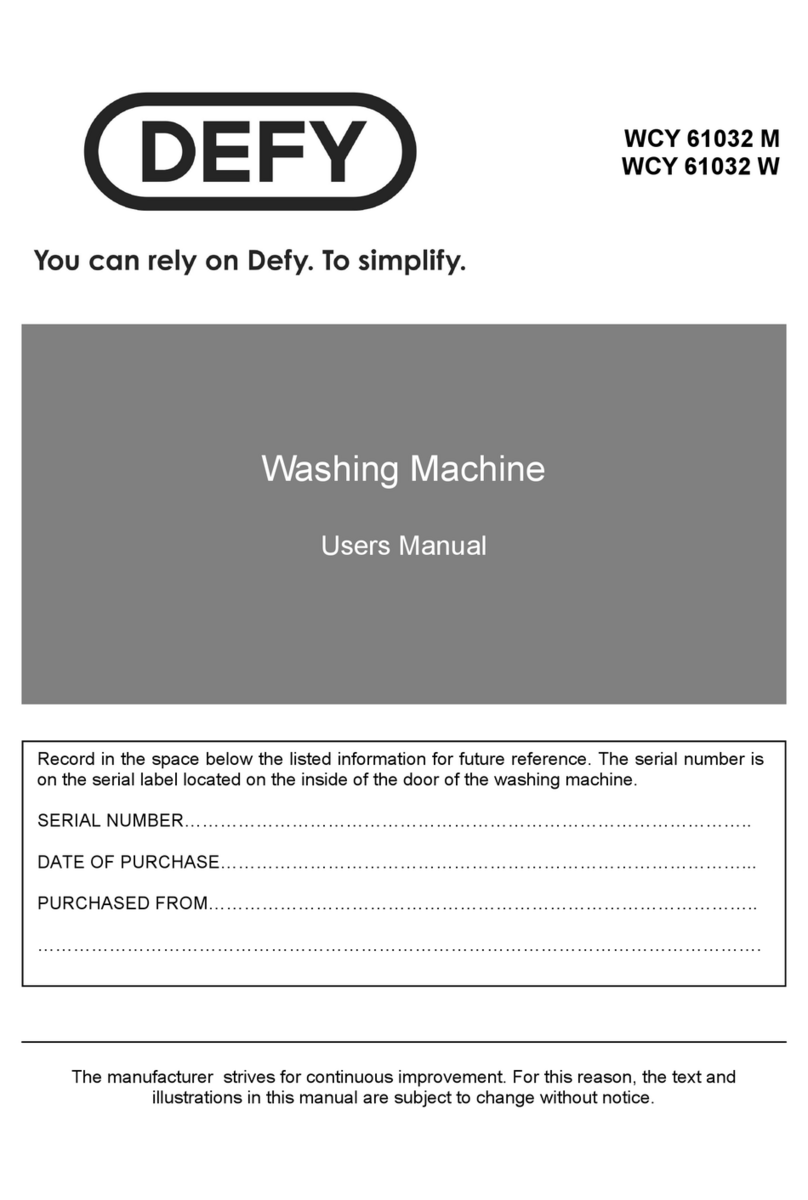
Defy
Defy WCY 61032 M User manual
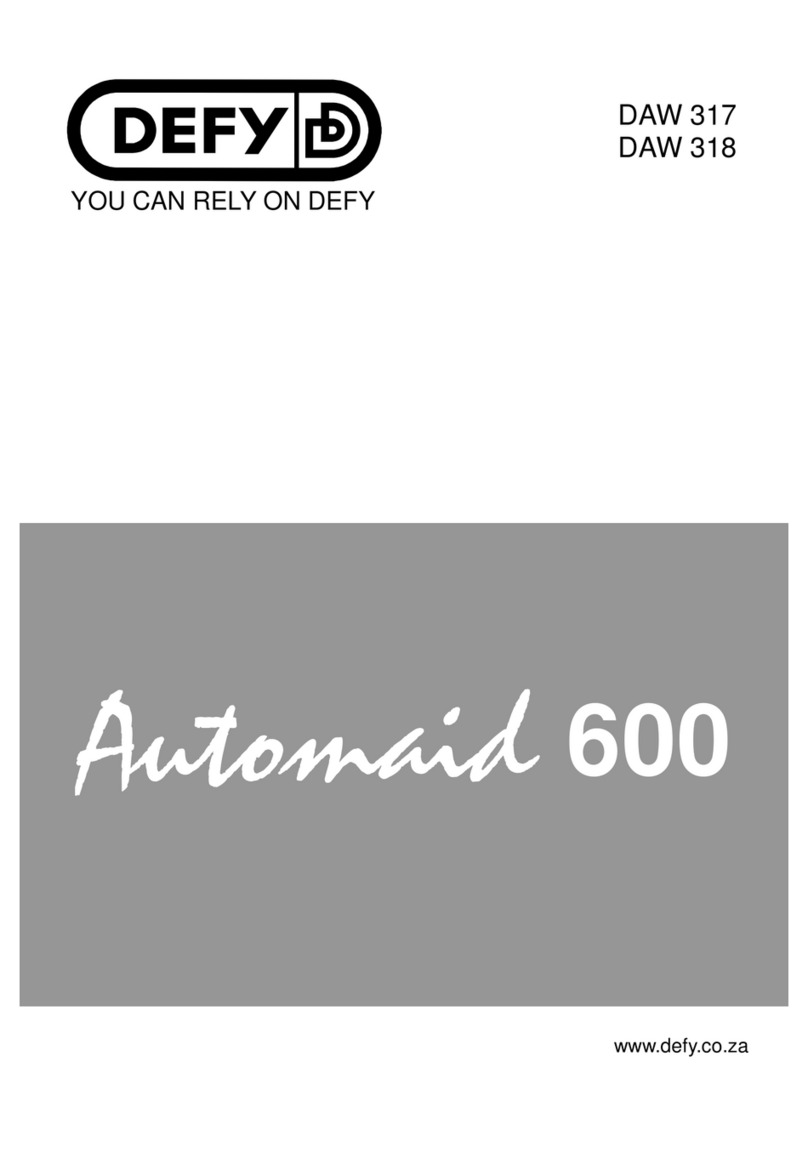
Defy
Defy DAW 318 User manual
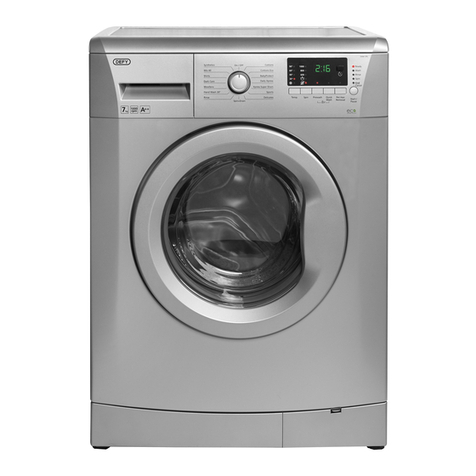
Defy
Defy DAW 376 User manual

Defy
Defy ELECTROLOGIC 720 User manual

Defy
Defy AUTOMAID SM User manual
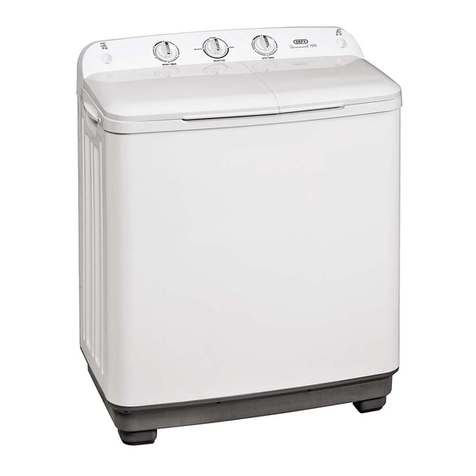
Defy
Defy Twinmaid 750 DTT166 User manual
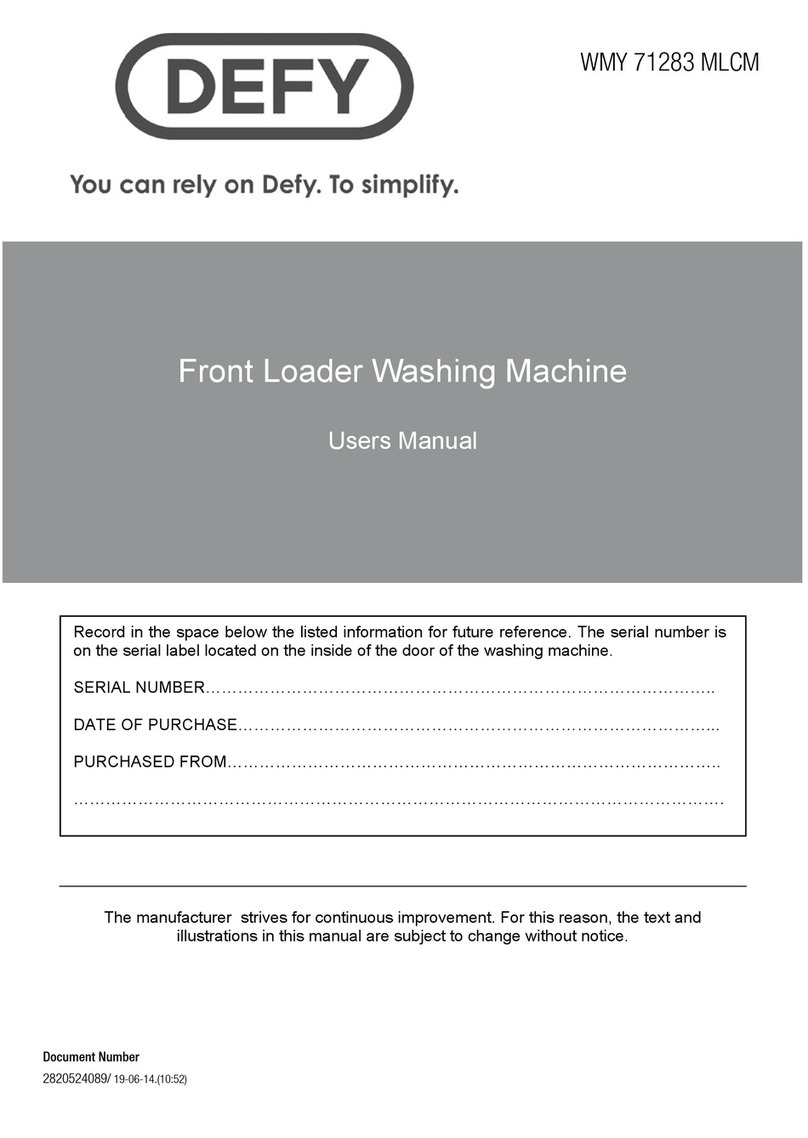
Defy
Defy WMY 71283 MLCM User manual
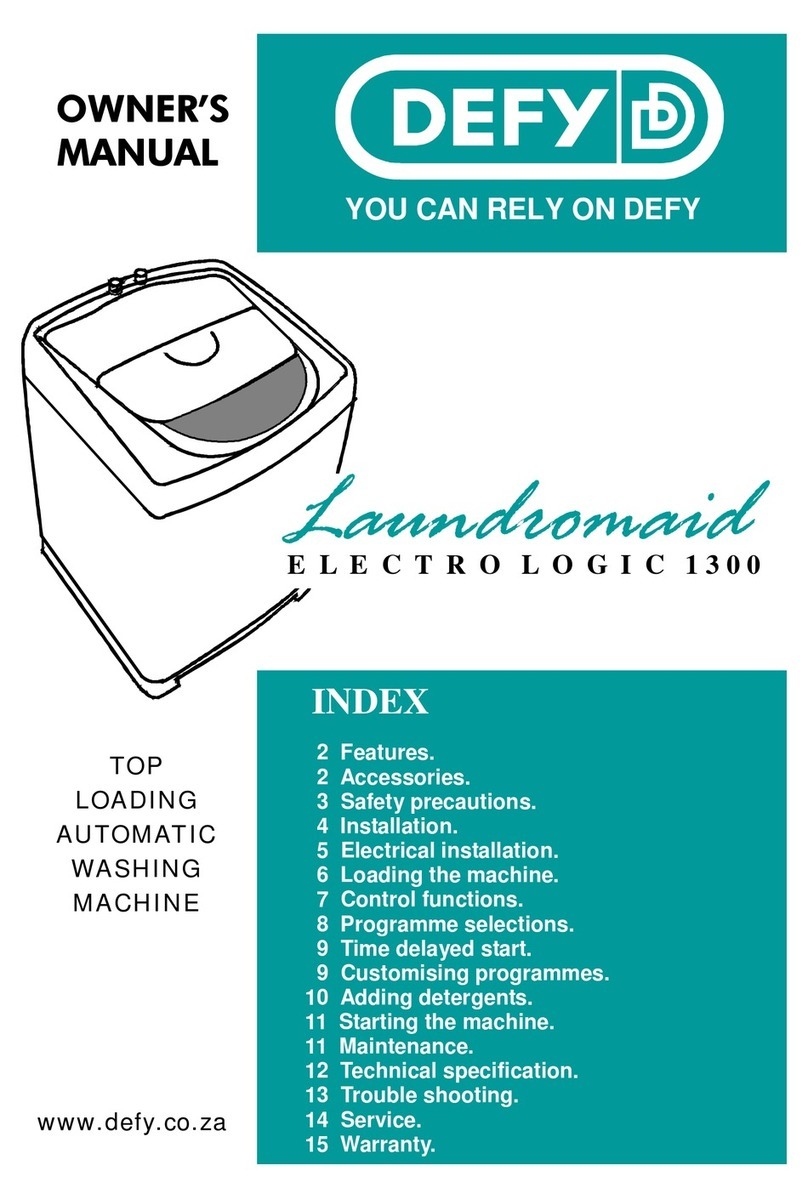
Defy
Defy LAUNDROMAID Electro Logic 1300 User manual
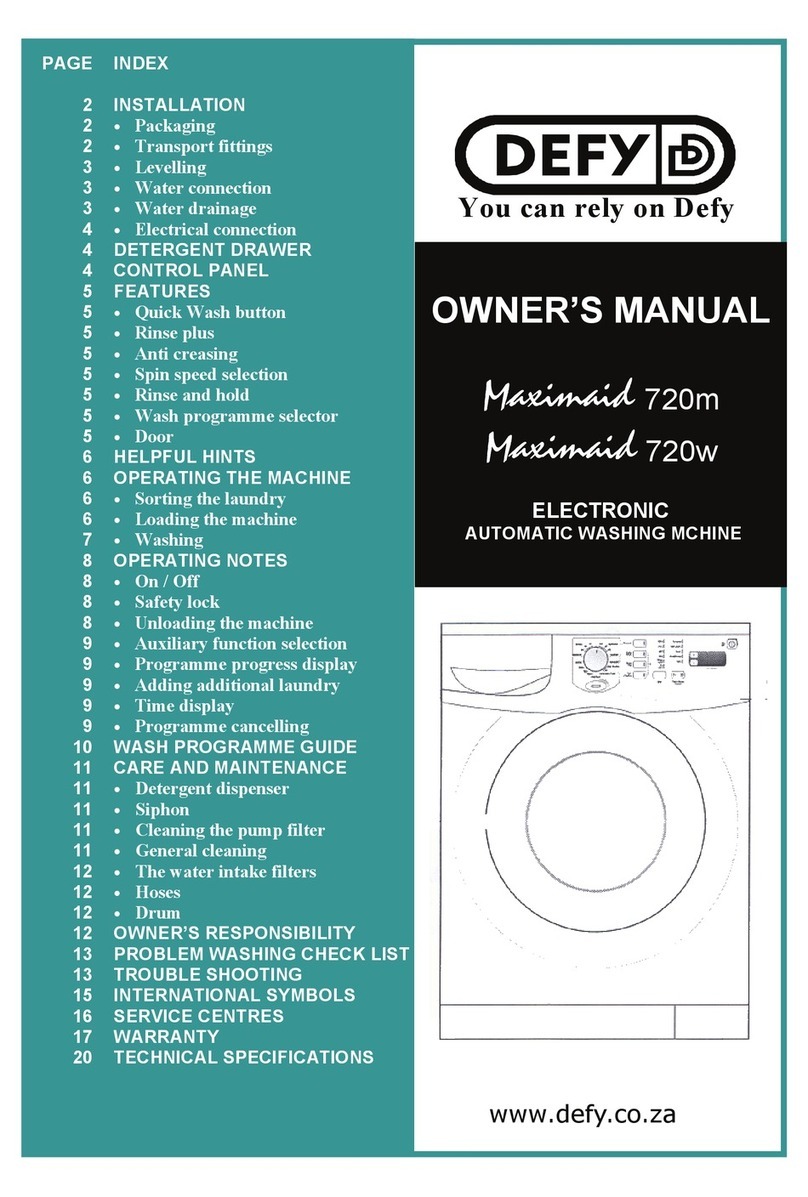
Defy
Defy MAXIMAID 720W User manual
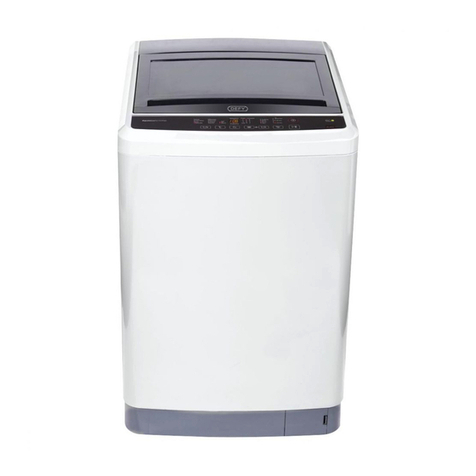
Defy
Defy DTL146 User manual
